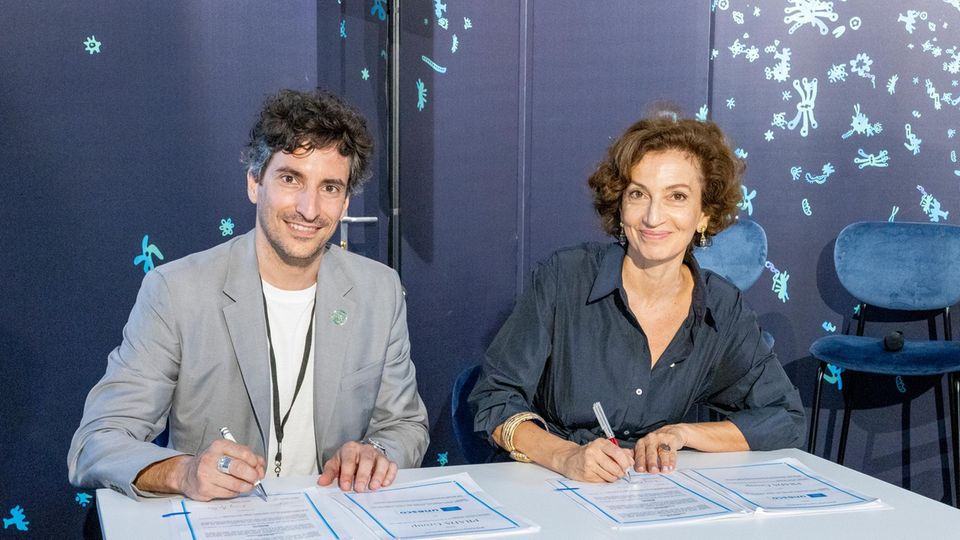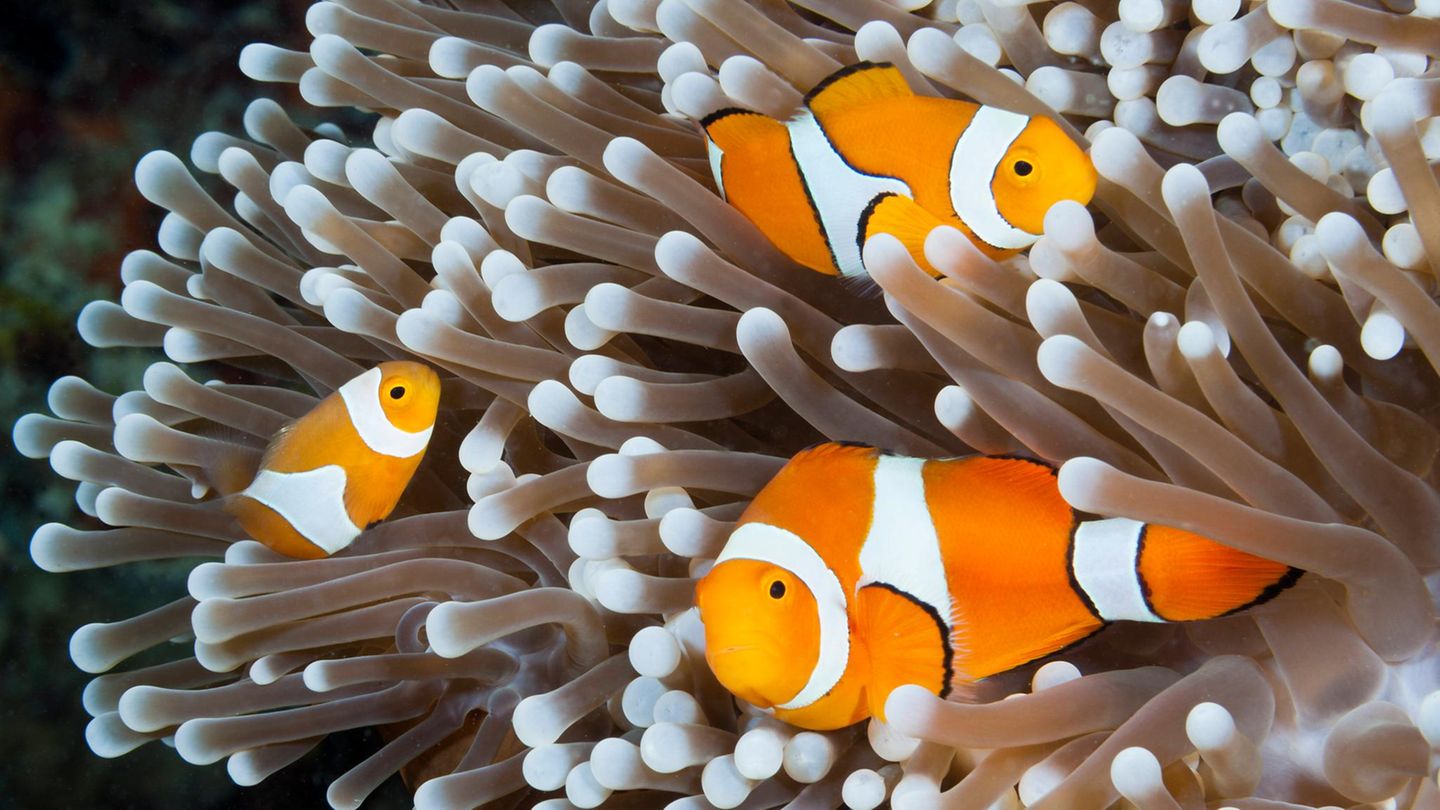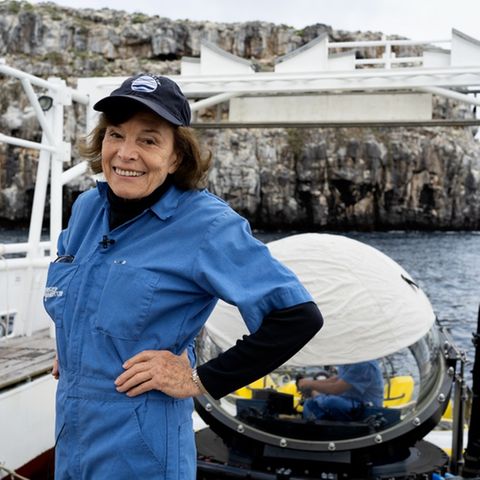Copy the current link
Add to the memorial list
They trudge through the sand, digging their little hands in the mud, every cancer is stretched into the air like a trophy before the group examines it under the microscope: in the “Kindergarten of the Lagoon” in Venice the sea is brought closer to three to five year olds in a playful way. Your sandpit? The channels and beaches of the city, which are threatened by climate change and could one day be swallowed by the water.
“What you learn as a child remains in the memory and can influence entire families and communities,” says Lorenzo BertelliCo-founder of the daycare project. The 37-year-old sounds like an environmental activist, he comes from a completely different industry: the fashion world.
Rolex and Prada on the sea course
The Italian is the eldest son of design legend Miuccia Prada and works in the family business, which he will take over at some point. That he is next to the fashion also committed to the sea, is related to “Sea Beyond”, an educational program for children and young people, which he in 2019 with the UNESCO organization “Intergovernental Oceanographic Commission “. Your goal: to sensitize children to the more conscious use of the oceans.
For Bertelli, they are the target group that does not yet roll with their eyes as soon as terms such as sustainability fall. “When we launched ‘Sea Beyond’, we started with only ten schools, “he says.” Today we reach almost 35,000 students in 54 countries. “
One Luxury brandthat makes climate careters? Sounds grotesque at first. After all, the fashion world is the largest environmental sinner, Every year up to two million tons of textiles end up in the trash, their production alone causes ten percent of global greenhouse missions. The seas also suffer from it, and annually they are polluted with 625,000 tons of chemicals from the textile and leather industry.
Today there are ambitious brands such as Ecoalf, Armedangels or Stella McCartney, which rely on ecologically correct fashion, but the great hype has long been passed. Sustainability, it seems, has become unsexy. On the one hand, there are many brands on the image that Green Washing operate. Finally the luxury brand Giorgio Armani. It was made to a million in millions because despite the precarious conditions at subcontractors, she praised for her ethics code and pretended to be sustainable on her website.
Sustainability has become unsexy
But the consequences of pandemic and Ukraine war also increase many labels. Sustainability projects that cost time and money will be deleted first. This is probably how it can also be explained why Prada holds on “Sea Beyond”. Unlike competing companies such as Gucci, who recently had to take a loss of 25 percent, sales at Prada increased by 9 percent, and even 40 percent for the sister brand Miu Miu.
Lorenzo Bertelli does not reveal how much the Prada Group is investing in “Sea Beyond”. However, it is known that every year one percent of the loss of millions of “re-nylon”, a hyped line made of recycled polyamide, flow into the coffers of the sea project.

So is sustainability luxury? The symbol of successful brands that can afford to spend millions for the oceans despite times of crisis?
No absurd thought, because Rolex is also similar to Prada. Despite the general purchase, the Swiss watch manufacturer recently achieved a record result that, according to analysts in 2024, was 10.6 billion euros. The luxury brand does not produce any clocks made of recycled steel or sustainable gold, but for years it has been supporting various climate projects as part of its “Perpetual Planet Initiative”. For Rolex, the connection to the sea is historical: the brand developed the first waterproof clock with the “Oyster Perpetual” in 1926, and in 1960 a deep-sea model was “Trieste”, which was first reaching the Marian ditch, the deepest point on the earth with 11,000 meters.
Sylvia Earle is also one of the scientists and researchers who supports Rolex. The US Oceanologist fights against the exploitation of the sea. Since 97 percent of global waters are not protected or fall into the territory of a country, the ecosystem overfishing, microplastics and chemical waste is exposed. Earle began to build in 2009, water protection areas, so -called “Hope Spots”. “We have achieved a lot, but to date only three percent of all fish and living beings are fully protected in the sea,” says Earle.
The support of Rolex has not only been directing public interest in their work for years, but also financing projects that would otherwise have failed due to empty health insurance companies. Lorenzo Bertelli also uses his influence to put pressure on politics. “We need political measures to integrate marine competence into national education systems,” he says. This is also why “Sea Beyond” organized the first world conference to protect the oceans, which took place in Venice in June.

It is not new that public projects are made possible with funds from the private sector, it is reminiscent of the restoration of historical buildings, especially in Italy and France, which were paid for by luxury brands. The renovation of the Trevi fountain in Rome? Fendi. The Rialto Bridge in Venice? Diesel. When reconstruction of the burned -down Paris Cathedral of Notre Dame, the large corporations LVMH and Kering even got an exchange of blows, who can raise more millions for the renovation.
A arms for the greatest sustainability budget? This could also use marine protection well.
Source: Stern
I am an author and journalist who has worked in the entertainment industry for over a decade. I currently work as a news editor at a major news website, and my focus is on covering the latest trends in entertainment. I also write occasional pieces for other outlets, and have authored two books about the entertainment industry.





